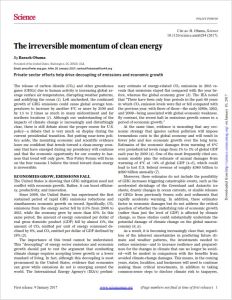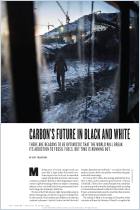Зарегистрируйтесь на getAbstract, чтобы получить доступ к этому краткому изложению.

Зарегистрируйтесь на getAbstract, чтобы получить доступ к этому краткому изложению.
Barack Obama
The Irreversible Momentum of Clean Energy
Science, 2017
Что внутри?
New US economic and political policies won’t change the course toward clean energy.
Recommendation
Combating climate change has been a priority for the outgoing Obama administration. However, many fear that the momentum toward a greener future will come to an abrupt halt when President-elect Donald Trump takes office, whose cabinet picks include fossil-fuel promoters and climate-change skeptics. Just before leaving office, President Barack Obama published an article in the prestigious academic journal Science, arguing that the clean energy sector in the US has advanced to a point where federal policies can no longer deter companies from riding the wave of the future toward a greener tomorrow. While always politically neutral, getAbstract recommends Obama’s optimistic exposé to business leaders and members of the Trump administration.
Summary
About the Author
Barack Obama has been president of the United States since 2009. He passed several climate initiatives at home and helped broker the Paris Agreement on climate change.
























Comment on this summary